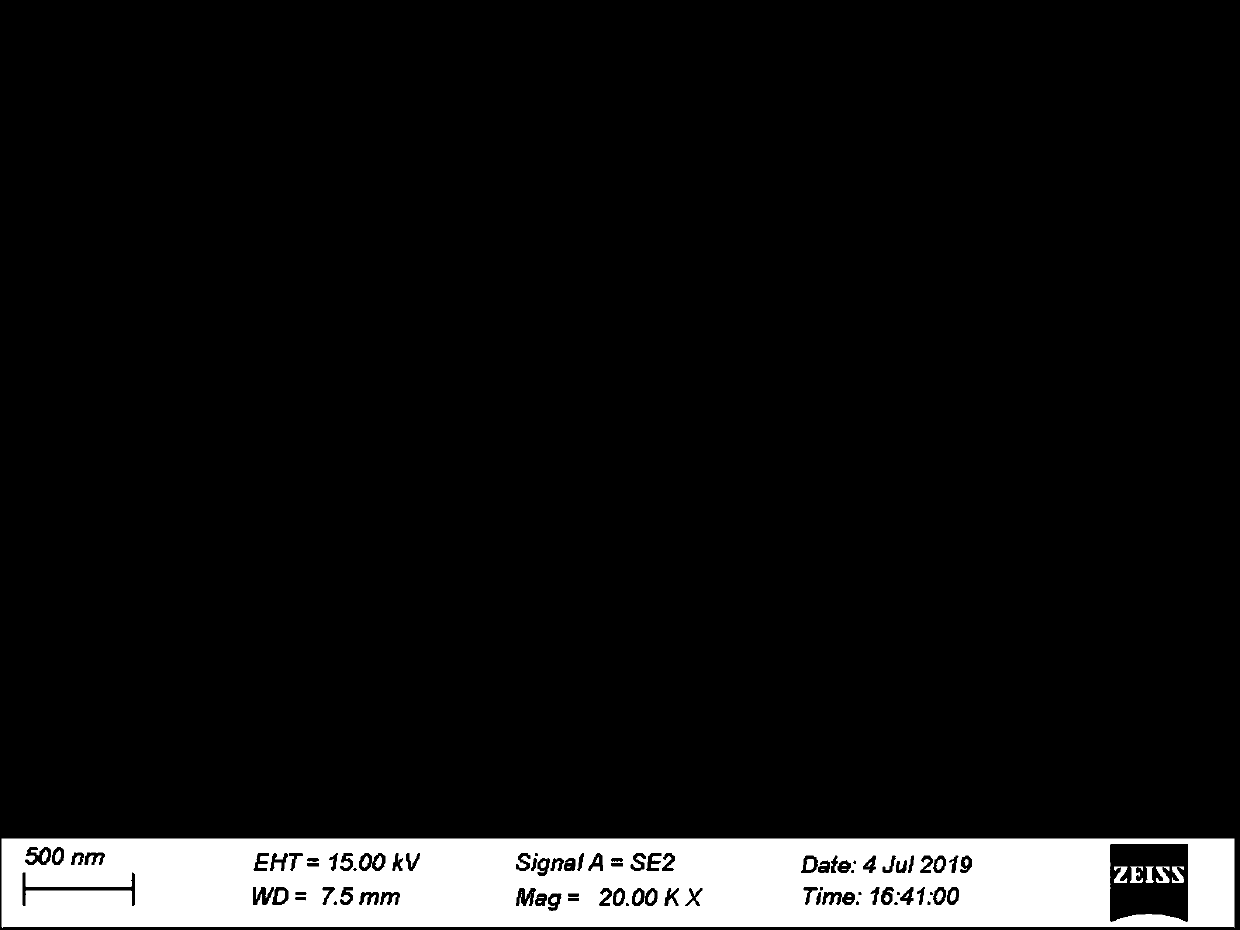Preparation method of PEG-coated porous rare earth phosphate fluorescent nano material
A technology of fluorescent nanomaterials and rare earth phosphates, applied in the field of nanomaterials, can solve the problems of low saturation magnetization, poor MRI imaging effect, poor water solubility, etc., and achieve the effects of mild preparation conditions, excellent fluorescent performance, and enhanced fluorescent performance
- Summary
- Abstract
- Description
- Claims
- Application Information
AI Technical Summary
Problems solved by technology
Method used
Image
Examples
Embodiment 1
[0033] Step 1: Preparation of porous rare earth-doped phosphate fluorescent nanoparticles by hydrothermal method;
[0034] (1) will Sm 2 o 3 , Y 2 o 3 Dissolve in nitric acid with a molar concentration of 3.6mol / L to obtain Sm(NO with a molar concentration of 0.05mol / L 3 ) 3 Solution A and 0.5mol / L Y(NO 3 ) 3 Solution B;
[0035] (2) Sm(NO 3 ) 3 Solutions A and Y (NO 3 ) 3 Solution B is mixed at a volume ratio of 2:9.8 to obtain solution C; add 3mol / L H to solution C 3 PO 4 Obtain reaction system D, make the mol ratio of cation / anion in reaction system D be 1:3;
[0036] (3) Use NaOH solution to adjust the pH value of the reaction system D to 1, and vigorously stir for 30 minutes, and then ultrasonically for 30 minutes to make it fully mixed to obtain the reaction system E;
[0037] (4) Transfer the reaction system E into a reaction kettle with polytetrafluoroethylene, seal it, put it in a dry box, and react for 12 hours in the temperature range of 200 ° C; natur...
Embodiment 2
[0049] Step 1: Preparation of porous rare earth-doped phosphate fluorescent nanoparticles by hydrothermal method;
[0050] (1) the Eu 2 o 3 , Y 2 o 3 Dissolved in nitric acid with a molar concentration of 3.6mol / L to obtain Eu(NO 3 ) 3 Solution A and 0.5mol / L Y(NO 3 ) 3 Solution B;
[0051] (2) Eu(NO 3 ) 3 Solutions A and Y (NO 3 ) 3 Solution B is mixed at a volume ratio of 8:9.2 to obtain a mixed solution C; add 3mol / L of H to the mixed solution C 3 PO 4 Obtain reaction system D, make the mol ratio of cation / anion in reaction system D be 1:3;
[0052] (3) Use NaOH solution to adjust the pH of the reaction system D to 1, and vigorously stir for 30 minutes, and then ultrasonically for 30 minutes to make it fully mixed to obtain the reaction system E;
[0053] (4) Transfer the reaction system E into a reaction kettle with polytetrafluoroethylene, seal it, put it in a dry box, and react for 12 hours in the temperature range of 200 ° C; naturally cool to room tempera...
Embodiment 3
[0060] Step 1: Preparation of porous rare earth-doped phosphate fluorescent nanoparticles by hydrothermal method;
[0061] (1) will Sm 2 o 3 , Y 2 o3 Dissolve in nitric acid with a molar concentration of 3.0mol / L to obtain Sm(NO with a molar concentration of 0.05mol / L 3 ) 3 Solution A and 0.5mol / L Y(NO 3 ) 3 Solution B;
[0062] (2) Sm(NO 3 ) 3 Solutions A and Y (NO 3 ) 3 Solution B is mixed at a volume ratio of 2:9.8 to obtain a mixed solution C; add 3mol / L of H to the mixed solution C 3 PO 4 Obtain reaction system D, make the mol ratio of cation / anion in reaction system D be 1:3;
[0063] (3) Adjust the pH of the reaction system D to 2 with NaOH solution, and vigorously stir for 30 minutes, and then ultrasonically for 30 minutes to make it fully mixed to obtain the reaction system E;
[0064] (4) Transfer the reaction system E into a reaction kettle with polytetrafluoroethylene, seal it, put it in a dry box, and react for 12 hours in the temperature range of 200...
PUM
 Login to View More
Login to View More Abstract
Description
Claims
Application Information
 Login to View More
Login to View More - R&D
- Intellectual Property
- Life Sciences
- Materials
- Tech Scout
- Unparalleled Data Quality
- Higher Quality Content
- 60% Fewer Hallucinations
Browse by: Latest US Patents, China's latest patents, Technical Efficacy Thesaurus, Application Domain, Technology Topic, Popular Technical Reports.
© 2025 PatSnap. All rights reserved.Legal|Privacy policy|Modern Slavery Act Transparency Statement|Sitemap|About US| Contact US: help@patsnap.com



